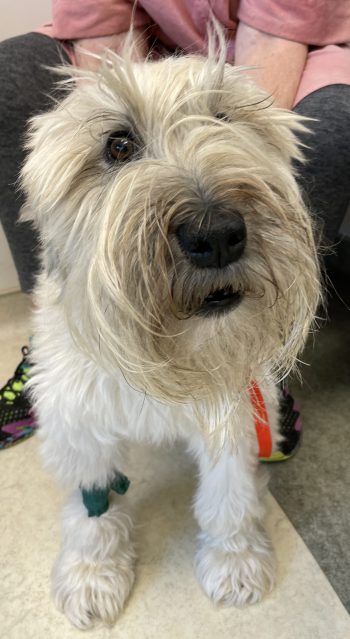Dr. Sara Jablonski is studying how to prevent, diagnose and treat protein-losing enteropathy (PLE) in dogs. We are currently recruiting dogs with newly diagnosed PLE and healthy Soft-Coated Wheaten Terriers (SCWT).
Dogs with newly diagnosed PLE may be eligible for one of the studies below, given certain criteria are met. All clinical studies that are available provide financial incentives. For the active trials, click on the links below for more information:
- Screening for genetic variants using whole genome sequencing in dogs with protein-losing enteropathy
Status: enrolling - Randomized controlled trial of two dry kibble diets for dogs with protein-losing enteropathy
Status: enrolling - Efficacy of ultra low-fat, fresh-prepared diets using novel versus common-source proteins for the management of canine protein-losing enteropathy
Status: coming soon
Healthy SCWT will be eligible to be enrolled at MSU in a collaborative clinical trial headed by Dr. Katie Tolbert of Texas A&M University, provided certain criteria are met. This study is actively enrolling. Find more information here.
If you have questions about whether your dog may be eligible for trials or a general inquiry please email the address linked below.
Email regarding Dr. Jablonski’s PLE studies.About PLE and the Studies



